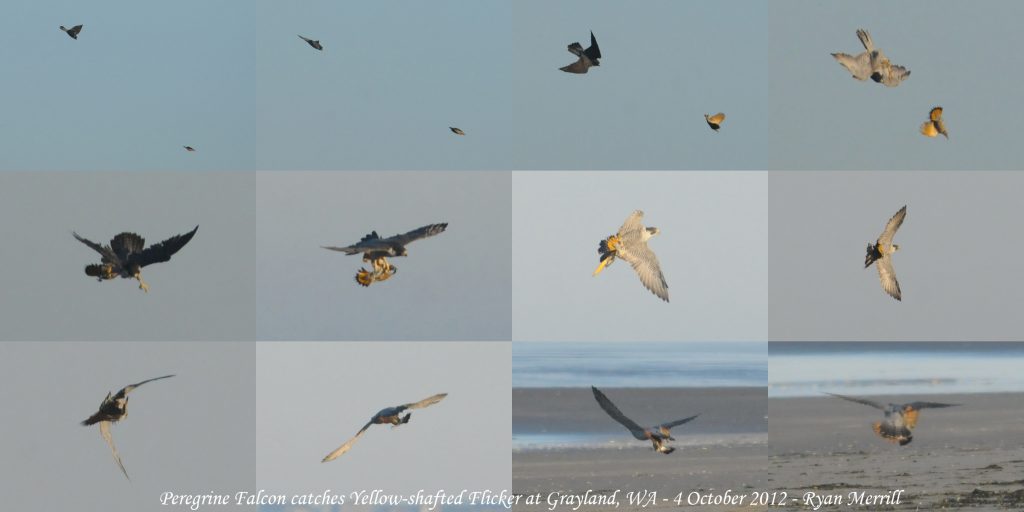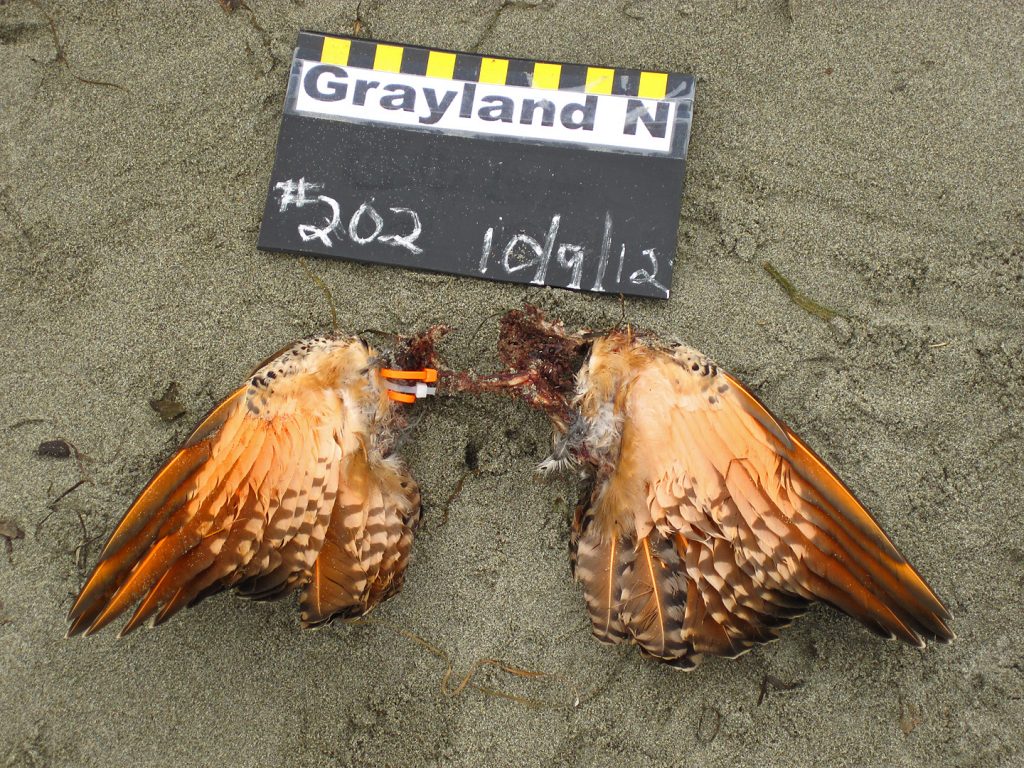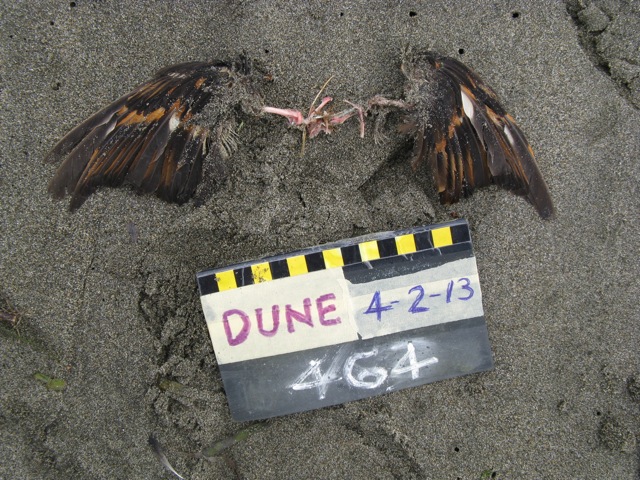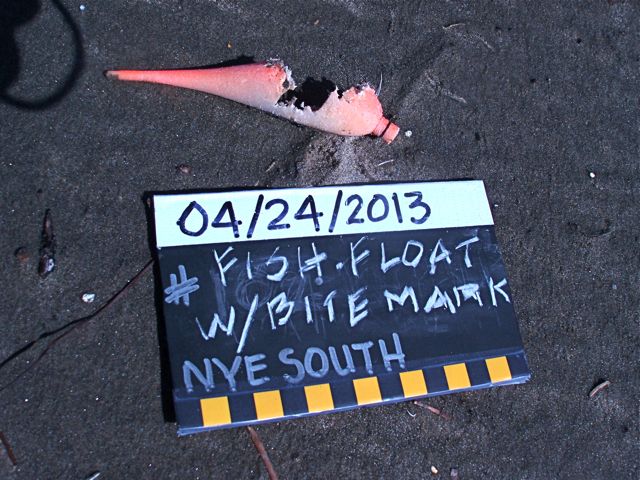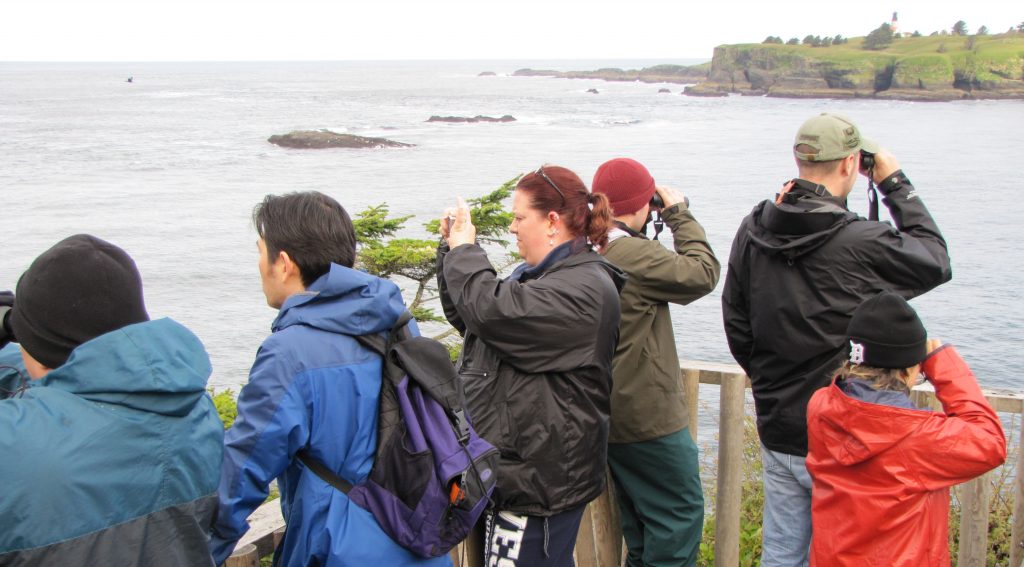Scientists are beginning to realize that an effective way to test for marine pollution is through seabirds. Birds like pelicans and gulls are at the top of the food chain, meaning they can accumulate large quantities of the toxins in marine ecosystems through a process called bioaccumulation. In addition, many seabirds will return to the same spots every year to breed after covering large expanses of the ocean during migration. This makes them ideal for studying pollution in marine environments, as the birds essentially take samples every time they stop to feed. Scientists at the University of Manitoba are taking advantage of this phenomenon and have begun using non-lethal sampling methods, such as drawing blood or taking a feather, to analyze the toxin levels in the tissues of seabirds.
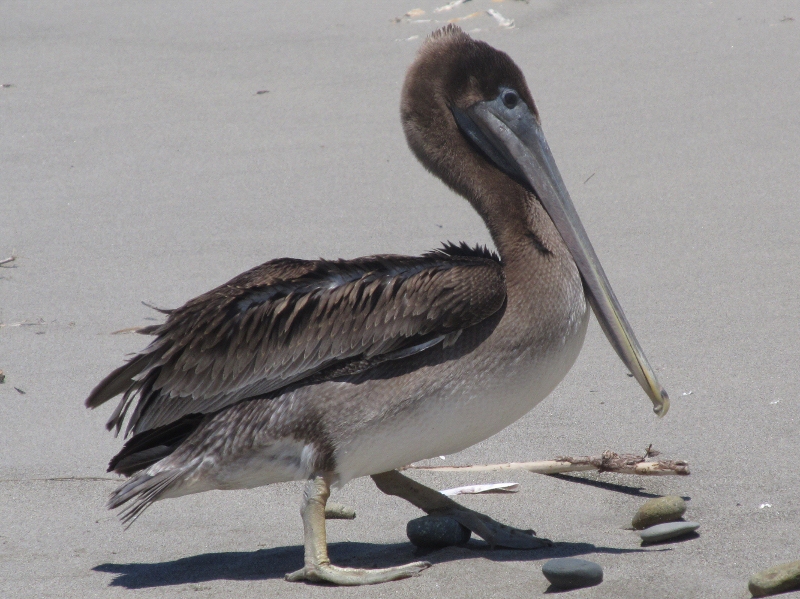
Birds like this Brown Pelican that spend a large part of the year out on the open ocean are helping scientists study ocean pollution.
Seabirds—both alive and dead—are providing a way to analyze the effect of plastics and other contaminants on the marine environment. Plastics continue to be one of the biggest threats to the oceans, with many of the chemicals found in them either leaching into the oceans or poisoning the animals that accidentally eat them. Plastics can also form a platform for other pollutants such as oil and industrial by-products to attach. Steps are being taken to regulate the use of certain chemicals found in plastics, but regulation can be tricky once the chemical is already on the market. Wildlife and environmental monitoring programs have already provided enough evidence to improve regulations on certain chemicals, a feat that would not have been possible without the cooperation of the birds.
For more information about this research click here.

